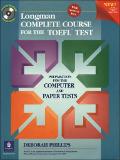| dc.description.abstract | This study aims to 1)describe the forms of parables Batak Toba indicating gender stereotypes; 2)describe the meaning contained in the parable Batak based on gender stereotypes; 3) describe the value and local wisdom in the parable Batak containing gender stereotypes. This study uses a qualitative method. Research sources are informants and document analysis, and field notes. The results showed that 1)forms Batak Toba parable that indicates gender stereotypes, among others :the form of parables do not have a brother, expecting the birth of a boy, the division of the estate, the ongoing customs, expectations for boys and female, neutral stereotypes, gender stereotypes on women, and stereotypes to men 2) the meaning of the parable Batak Toba containing gender stereotypes, among others: do not have a brother, expecting the birth of a boy, the division of the estate, the ongoing customs, stereotypes to men. 3) values and local wisdom in the parable Batak Toba containing gender stereotypes the example 3H (hamoraon, hagabeon, hasangapon) which are still held in high esteem by the people of Batak Toba. | en_US |

